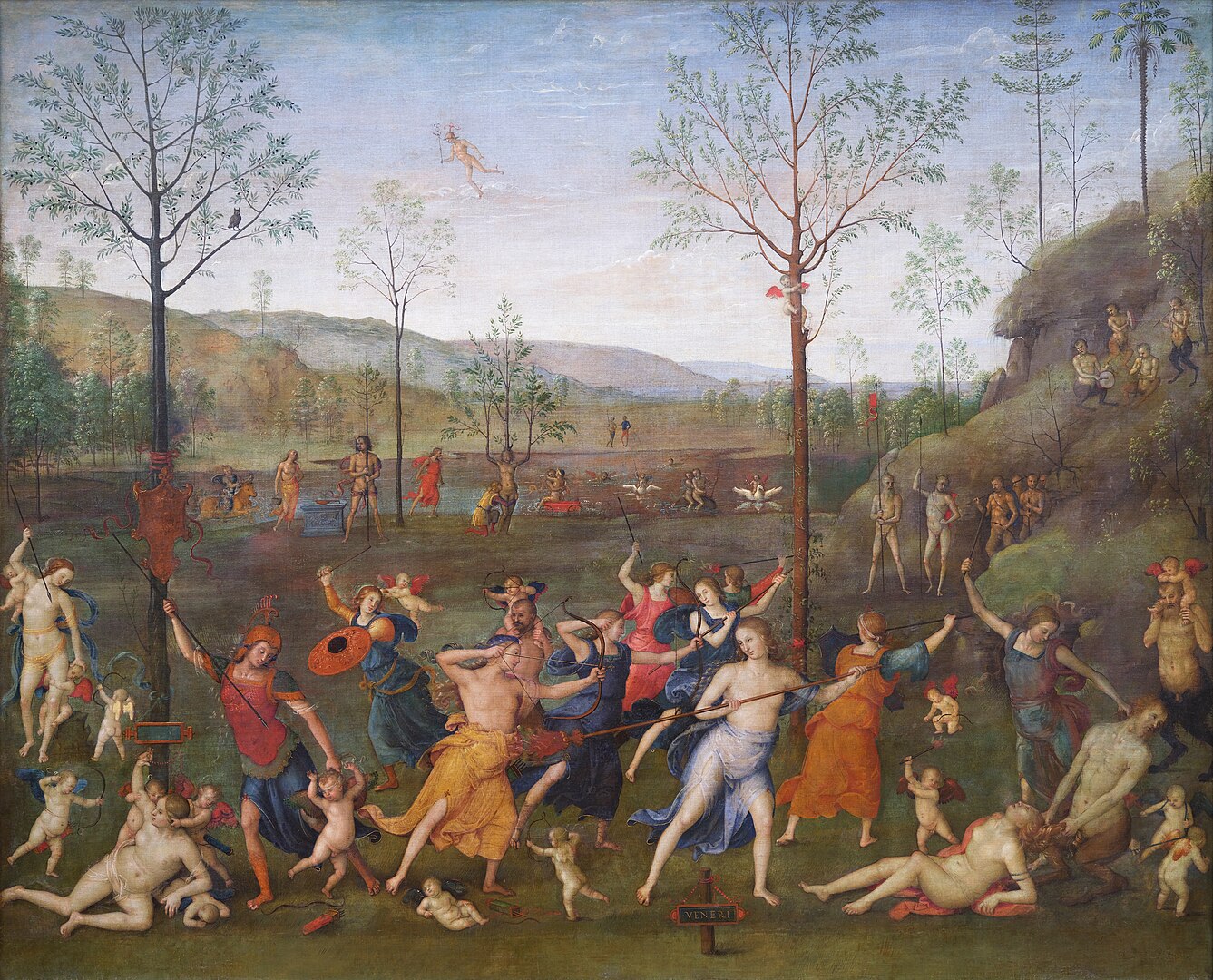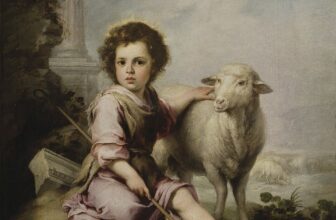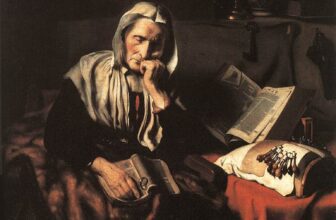
Why is the battle of love and chastity important?
The Italian Renaissance was a flourishing epoch of art, philosophy, and culture that reshaped Europe’s identity and understanding of the human experience. Among the many luminaries of this golden era was Pietro Perugino, a master of delicate beauty and refined composition. His work, “The Battle Between Love and Chastity,” is a testament to the profound symbolism and storytelling embedded within Renaissance art. This intricate painting captures the eternal struggle between two powerful forces: love and chastity. Through this work, Perugino delves into themes of virtue, desire, and the complex interplay of human emotions.
The Artist Behind the Canvas
Pietro Perugino (1446–1523) was one of the foremost artists of the Italian Renaissance. Born Pietro Vannucci in Città della Pieve, he gained the moniker “Perugino” after moving to Perugia, where he received much of his artistic training. Renowned for his graceful figures, serene landscapes, and masterful use of perspective, Perugino’s work was deeply admired during his lifetime. He was a mentor to Raphael, one of the Renaissance’s most celebrated figures, and his influence is evident in Raphael’s early works.
“The Battle Between Love and Chastity,” painted in 1503, is a prime example of Perugino’s ability to convey complex narratives through harmony and balance. This piece was commissioned by Isabella d’Este, the Marchioness of Mantua, who was an ardent patron of the arts and a significant figure in Renaissance culture. Isabella sought to create a studiolo—a private study adorned with artworks that reflected her intellectual pursuits and moral ideals. Perugino’s painting was intended to encapsulate the virtues Isabella cherished.
An Allegorical Masterpiece
“The Battle Between Love and Chastity” is rich with allegorical meaning. The scene unfolds in an idyllic landscape, a hallmark of Perugino’s style, where the interplay of light and shadow enhances the composition’s depth. The painting juxtaposes two groups of figures, each representing the opposing forces of love and chastity.
On one side, Venus, the goddess of love, presides over a group of figures symbolizing earthly desires and passions. Venus is depicted with an air of allure and confidence, embodying the seductive power of love. Her followers, a mix of mythological beings and mortals, are engaged in dynamic, almost chaotic, movements, emphasizing the consuming nature of passion.
Opposing Venus is Diana, the goddess of chastity and the hunt. Diana’s presence is commanding yet serene, embodying restraint and purity. Her followers, dressed in modest attire, exude a sense of calm and discipline. The group’s postures and expressions reflect their unwavering commitment to virtue, creating a stark contrast with Venus’s entourage.
The central action of the painting is a symbolic battle, but Perugino avoids depicting it with violence. Instead, the confrontation is represented through gestures and expressions, emphasizing the moral and philosophical conflict rather than physical combat. This subtle approach invites viewers to reflect on the internal struggles between desire and self-restraint that define the human condition.
A Landscape of Meaning
Perugino’s mastery of landscape is evident in “The Battle Between Love and Chastity.” The backdrop features rolling hills, tranquil waters, and a luminous sky, evoking a sense of divine order and harmony. The natural setting serves as a reminder of humanity’s place within the larger cosmos and the enduring cycles of temptation and redemption.
The placement of architectural elements within the scene further enhances its allegorical depth. A classical temple in the distance symbolizes the ideals of reason and virtue, suggesting that the path to chastity is aligned with higher, spiritual pursuits. In contrast, the luxuriant vegetation surrounding Venus’s group hints at the fertile yet transient nature of earthly pleasures.
Isabella d’Este’s Vision
For Isabella d’Este, “The Battle Between Love and Chastity” was more than a decorative piece; it was a visual manifesto of her personal and philosophical ideals. A woman of remarkable intellect and ambition, Isabella navigated the male-dominated world of Renaissance politics and culture with grace and determination. Her studiolo was a sanctuary of knowledge and creativity, reflecting her belief in the transformative power of art and learning.
Perugino’s painting aligns with Isabella’s aspirations by exploring themes that resonated deeply with Renaissance humanism. The tension between love and chastity reflects broader questions about human nature, morality, and the pursuit of virtue. Through this work, Isabella sought to engage viewers in a contemplative dialogue about these enduring dilemmas.
The Legacy of “The Battle Between Love and Chastity”
While “The Battle Between Love and Chastity” may not be as widely recognized as some of Perugino’s other works, its significance lies in its intricate allegory and connection to one of the Renaissance’s most influential patrons. The painting exemplifies the fusion of art, philosophy, and personal expression that defined the era.
Today, Perugino’s work continues to inspire admiration for its technical brilliance and timeless themes. “The Battle Between Love and Chastity” serves as a reminder of the Renaissance’s enduring legacy and its ability to probe the complexities of the human experience through art. As we stand before this masterpiece, we are invited to reflect on our own battles between love and chastity, passion and virtue, and the eternal quest for balance and harmony.




